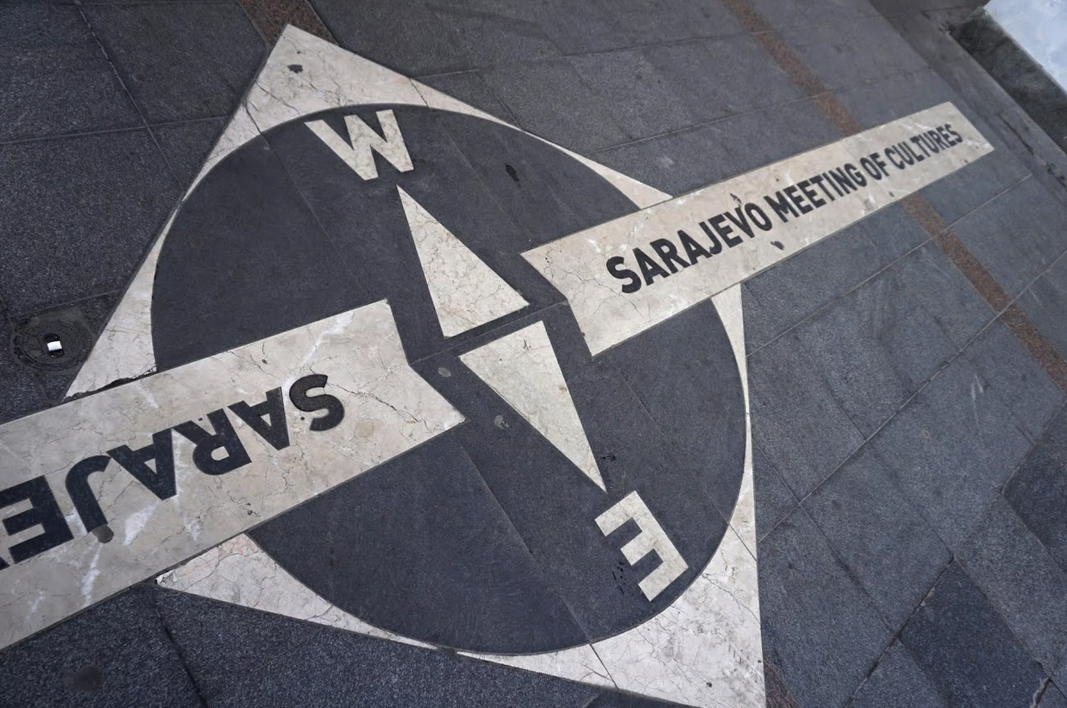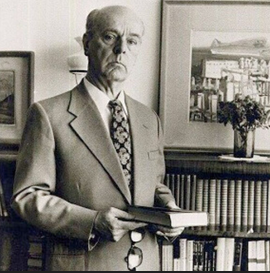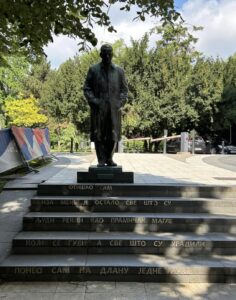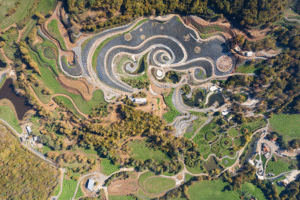The Line That Tells A Story: Sarajevo Meeting of Cultures
-
by
Adna Avdic
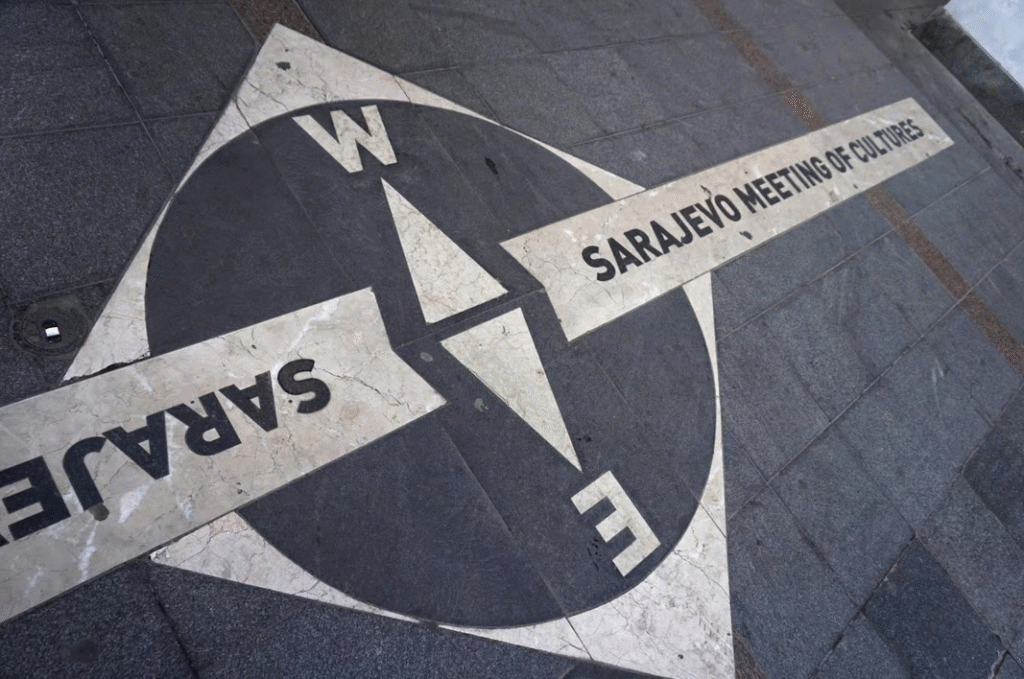
It’s no secret that Sarajevo, the capital of Bosnia and Herzegovina, has passed through the hands of many empires throughout history. None have left a deeper mark than the Ottoman and the Austro-Hungarian Empires. Their legacies remain visible in the city’s architecture. Nowhere is this contrast more visible than on Ferhadija Street, where a line on the pavement called the “Sarajevo Meeting of Cultures” draws a quiet boundary between Eastern and Western influences on the city.
On the Eastern side of this line is a version of Sarajevo shaped by centuries of Ottoman rule. Here, you’ll find Turkish-style architecture, modest yet elegant mosques, lively markets, and intimate communal spaces. The streets of Baščaršija, a famous bazaar in Sarajevo, curve naturally, following the terrain to form a charming maze.
Notable landmarks on the Eastern side of the “Sarajevo Meeting of Cultures” demarcation include the Sebilj, which is a beautifully carved, wooden fountain used by citizens to freshen up. Additionally, there’s the Gazi Husrev-begov bezistan, a covered bazaar that still hums with trade, just as it did centuries ago.
On the other side of the “Sarajevo Meeting of Cultures” is the West, where the influence of the Austro-Hungarian Empire can be seen. Wide boulevards and grand facades showcase a European vision of elegance, symmetry, and urban order. Architectural styles like Art Nouveau and neo-Gothic inform the design of landmarks like the Sacred Heart Cathedral, Sarajevo’s City Hall (Vijećnica), and the Academy of Fine Arts. These buildings feature pointed spires that emphasize precise and decorative craftsmanship.
The “Sarajevo Meeting of Cultures” isn’t just a cool photo op; it’s where two worlds meet, reminding passersby that Sarajevo has always been a city shaped by the East and the West, serving as a home for resilient, beautiful people with a diverse array of identities and faiths. Sarajevo welcomes everyone who chooses to understand her heart.

